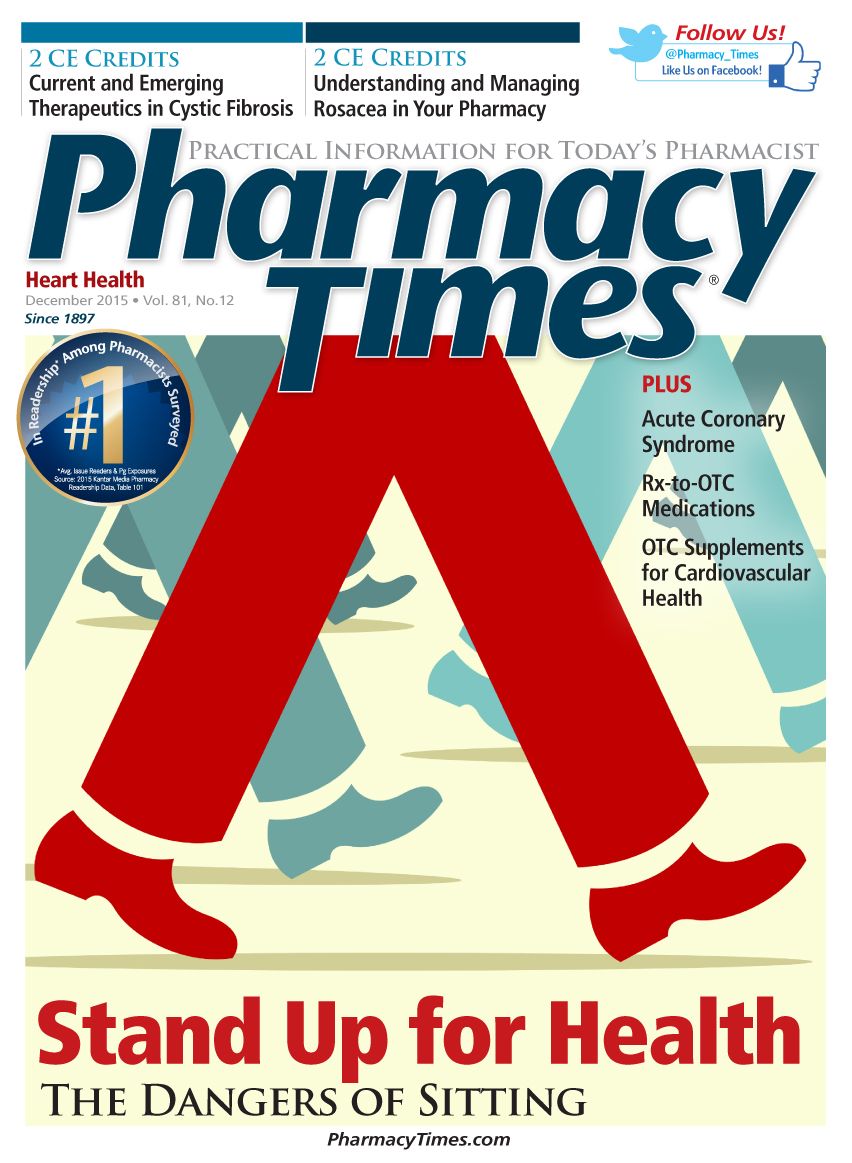Publication
Article
Pharmacy Times
Prestalia
Author(s):
The FDA has approved Symplmed's Prestalia (perindopril arginine and amlodipine besylate) tablets for the treatment of hypertension to lower blood pressure in patients who are not adequately controlled with monotherapy or as initial therapy in patients likely to need multiple medications to achieve their blood pressure (BP) goals.1 An estimated 1 in 3 Americans have hypertension, about half of whom have it controlled.
The FDA has approved Symplmed’s Prestalia (perindopril arginine and amlodipine besylate) tablets for the treatment of hypertension to lower blood pressure in patients who are not adequately controlled with monotherapy or as initial therapy in patients likely to need multiple medications to achieve their blood pressure (BP) goals.1 An estimated 1 in 3 Americans have hypertension, about half of whom have it controlled.2 Lowering BP reduces the risk of fatal and nonfatal cardiovascular events, primarily strokes and myocardial infarctions (MIs). Although this effect has been seen in controlled trials of antihypertensive medications, including amlodipine and angiotensin-converting enzyme (ACE) inhibitors, there are no controlled trials that demonstrate this benefit with Prestalia.1,3
Pharmacology and Pharmacokinetics
Perindopril is an ACE inhibitor. Amlodipine is a dihydropyridine calcium channel blocker. Prestalia should not be used in patients with renal impairment (creatinine clearance <60 mL/min), hepatic impairment, or heart failure.1
Dosage and Administration
Prestalia is available as a fixed-dose tablet of perindopril arginine and amlodipine in 3.5/2.5 mg, 7/5 mg, and 14/10 mg. Treatment should begin with 3.5/2.5 mg once daily. The dose should be adjusted at 1 to 2-week intervals, as needed, for BP control, with a maximum dose of 14/10 mg once daily.1
Clinical Trials
The maximum daily dose of Prestalia (14/10 mg) was studied in a double-blind, active-controlled study of 837 patients with hypertension. Study participants received Prestalia 14/10 mg, perindopril erbumine 16 mg, or amlodipine 10 mg once daily. At week 6, the patients using Prestalia demonstrated a statistically significant reduction in BP compared with the patients in the other groups. The minimum daily dose of Prestalia (3.5/2.5 mg) was evaluated in a study of 1581 patients with hypertension. Patients received either Prestalia 3.5/2.5 mg, perindopril arginine 3.5 mg, perindopril arginine 5 mg, amlodipine 2.5 mg, amlodipine 5 mg, or placebo. At week 8, the Prestalia group had a statistically significant reduction in BP compared with the groups using perindopril arginine 3.5 mg or amlodipine 2.5 mg.1
Contraindications, Warnings, and Precautions
Prestalia carries a black box warning regarding the risk for fetal toxicity. Agents that act directly on the renin-angiotensin system can cause injury and death to a developing fetus. If pregnancy is confirmed in a patient using Prestalia, the medication should be discontinued as soon as possible.
Prestalia is contraindicated in patients with a history of angioedema or hypersensitivity to any ACE inhibitor or amlodipine. Aliskiren should not be used concomitantly with Prestalia in patients with diabetes.
Anaphylactoid reactions, such as angioedema of the head and neck or intestines, may occur. Worsening angina and an acute MI candevelop after starting or increasing the dose of Prestalia, especially in patients with severe obstructive coronary artery disease. Patients using Prestalia should be monitored for hypotension and hyperkalemia. Renal function should be monitored throughout treatment. A persistent nonproductive cough has been reported with all ACE inhibitors.
Concurrent use of potassium supplements and potassium-sparing diuretics may increase the risk of hyperkalemia. Concurrent use with lithium may lead to increased serum lithium levels and toxicity symptoms. When used with injectable gold, flushing, nausea, or hypotension may occur. Use of Prestalia with another inhibitor of the reninangiotensin system may increase the risk of renal impairment, hypotension, and hyperkalemia. When used with simvastatin, the daily simvastatin dose should not exceed 20 mg. Concurrent use with nonsteroidal anti-inflammatory drugs may increase the risk of renal impairment and loss of antihypertensive effect. Use with diuretics may increase risk of hypotension. Use with CYP3A4 inhibitors may increase risk of hypotension and edema.
Prestalia should not be used during breast-feeding. Its safety and effectiveness have not been studied in pediatric patients. Because there are currently no data to guide dosing in patients older than 65 years, Prestalia should not be used in these patients. The most common adverse reac- tions are edema, cough, headache, and dizziness.1
Dr. Holmberg earned her PharmD from the University of Connecticut and completed an ambulatory care residency at the Phoenix VA Healthcare System. Her practice has also included pediatrics and inpatient mental health. She resides in Phoenix, Arizona.
References
- Prestalia [prescribing information]. Cincinnati, OH: Symplmed Pharmaceuticals, LLC; 2015. www.symplmed.com/pdf/Prestalia-PI.pdf. Accessed August 2015.
- High blood pressure. Centers for Disease Control and Prevention website. www.cdc.gov/bloodpressure/. Updated February 19, 2015. Accessed August 2015.
- Symplmed launches Prestalia for treatment of hypertension [news release]. Cincinnati, OH, and Bend, OR: Symplmed Pharmaceuticals, LLC; July 9, 2015. www.symplmed.com/symplmed_news_july_9_2015/. Accessed August 2015.







